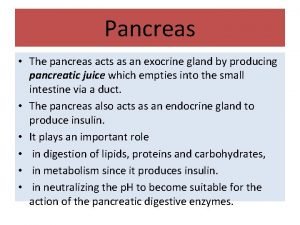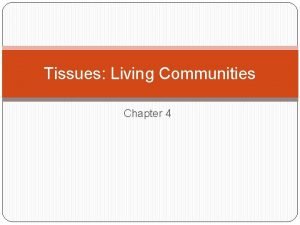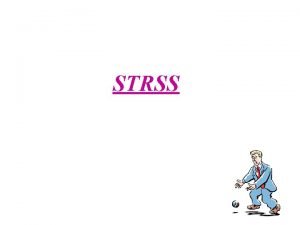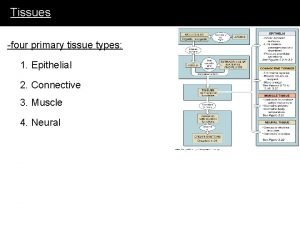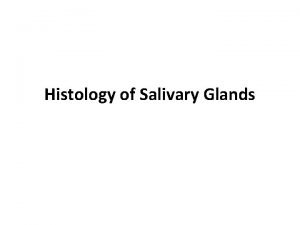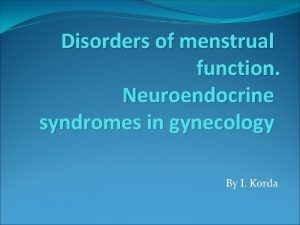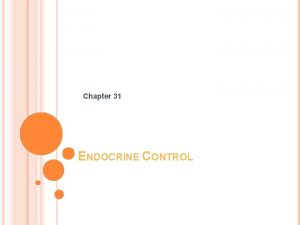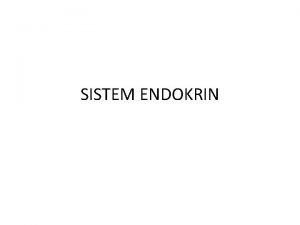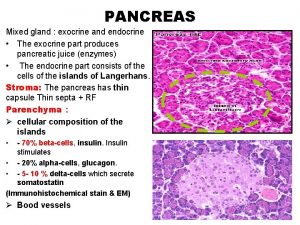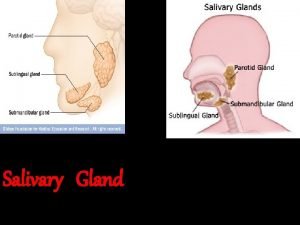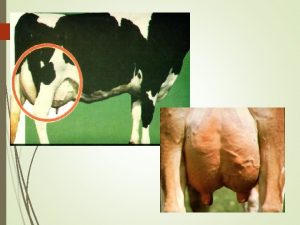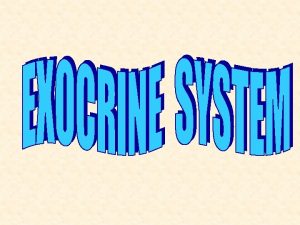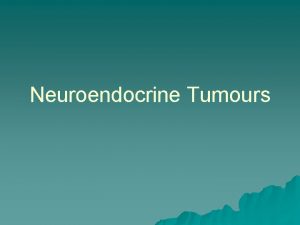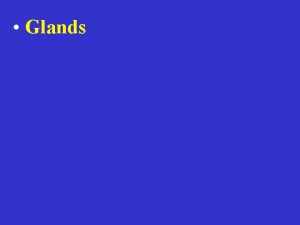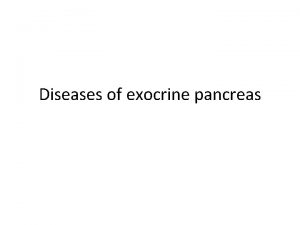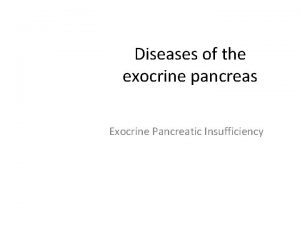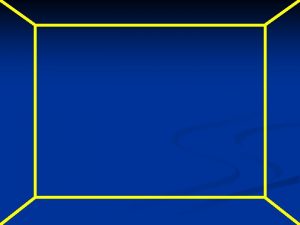NEUROENDOCRINE SYSTEM GLAND Definition and Types exocrine gland













- Slides: 13

NEUROENDOCRINE SYSTEM • GLAND: - Definition and Types (exocrine gland endocrine gland) • EXOCRINE GLAND: - An organ that makes hormones that are released directly into the blood and travel to tissues and organs all over the body. Endocrine glands help control many body functions, including growth and development, metabolism, and fertility. Some examples of endocrine glands are the pituitary, thyroid, and adrenal glands. • ENDOCRINE GLAND: - A gland that makes substances such as sweat, tears, saliva, milk, and digestive juices, and releases them through a duct or opening to a body surface. Examples of exocrine glands include sweat glands, lacrimal glands, salivary glands, mammary glands, and digestive glands in the stomach, pancreas, and intestines. HORMONES: a regulatory substance produced in an organism and transported in tissue fluids such as blood or sap to stimulate specific cells or tissues into action. • It should be noted that hormonal influence upon behavior do not exist independently of the central nervous system. There is a close association between endocrine glands and the brain. So , here comes the concept of “NEUROENDOCRINE SYSTEM”.

• NEUROENDOCRINE SYSTEM: • Definition and Function • Concept of neuroendocrine cells. • FUNCTIONS OF NEUROENDOCRINE SYSTEM: • The interconnectivity and interdependency of nervous system and endocrine system in maintaining bodily functions and the state of internal equilibrium i. e. , homeostasis. • ü ü ü ü Other functions of neuroendocrine cells are following: Control the release of digestive enzyme to break down food. Control how fast food moves through the GI tract. Control the air and blood flow through lungs. Influences blood pressure and heart rate. Control the blood glucose level. Control Bone and muscle growth. Control sleep wake cycle.

SUMMARY REFLECT SOME OF THE MAJOR ENDOCRINE GLANDS IN THE BODY, THEIR HORMONES AND GENERAL FUNCTION GLAND HORMONES GENERAL FUNCTION Thyroid Thyroxin Increases metabolism parathyroid parathormone Control of calcium and phosphate Adrenal cortex a. Glucocorticoids Increases carbohydrate metabolism. b. Mineral corticoids Control of body minerals. Adrenal medulla a. epinephrine/ adrenaline. Stimulates ACTH secretion. b. Norepinephrine/ noradrenalin. Increases sympathetic arousal.

GLAND HORMONES GENERAL FUNCTION Anterior pituitary a. Growth hormone. b. Thyrotropin. c. Adrenocorticotropic hormone(ACTH). d. Follicle stimulating hormone(FSH). e. Luteinizing hormone(LH). f. Prolactin. a. Stimulation of growth. b. Stimulation of thyroid. c. Stimulation of adrenal cortex. d. Development of germ cells. e. Stimulation of sex hormone. f. Increases in milk production. Posterior pituitary a. vasopressin. b. Oxytocin. a. Water control. b. Uterine contractions & increases in milk production. Gonads a. Estrogen( female). b. Androgen(male). a. Primary/ secondary sex characteristics. b. Primary/ secondary sex characteristics.

Each gland to be studied with respect to the following points ØThe site or location ØThe physical structure ØHormones released and their general functions ØAbnormalities of release i. e. Ø HYPER (over) and Ø HYPO (under) secretion of those hormones

THE PITUITARY GLAND • LOCATION • STRUCTURE OF PITUITARY GLAND: - shape, size, weight, structural division. , concept of anterior and posterior pituitary. • PITUITARY AS MASTER GLAND: The pituitary gland is frequently referred to as master gland because most of its hormones are tropic hormones, which influence the release of hormones from other glands. • REEASED HORMONES WITH THEIR ENERAL FUNCTIONS Pituitary gland is located just below the pineal gland hypothalamus. ANTERIOR PITUITARY • Growth hormone - Stimulation of growth. • Thyrotropin - Stimulation of thyroid. • Adrenocorticotropic hormone(ACTH) - Stimulation of adrenal cortex. • Follicle stimulating hormone(FSH)- Development of germ cells. • Luteinizing hormone(LH) - Stimulation of sex hormone. • Prolactin - Increases in milk production. POSTERIOR PITUITARY • Vasopressin - regulator of water balance in the body, also known as antidiuretic hormone(ADH). • Oxytocin a. It stimulates the contractions of uterus during labor. b. it helps to increase milk production after child birth.

• ABNORMALITIES OF GROWTH HORMONE : HYPERSECRETION: 1. Gigantism 2. Acromegali. HYPOSECRETION: Dwarfism. • ABNORMALITIES OF THYROTROPIN: HYPERSECRETION: Grave’s disease. HYPOSECRETION: Cretinism. • ABNORMALITIES OF ACTH: HYPERSECRETION: Cushing’s syndrome. HYPOSECRETION: Addison’s disease. • ABNORMALITIES OF VASOPRESSIN: HYPERSECRETION: Diabetes insipidus.

THYROID GLAND • LOCATIONS: - Thyroid gland lying on the sides of the throat about at the level of larynx. • STRUCTURE: - It generally consists of two lobes which is connected by a strip of thyroid tissue, known as isthmus. • HORMONES OF THYROID GLAND: - With the help of iodine, thyroid gland makes 3 hormones. Thyroxine( T 4). Triiodothyronine(T 3). Thyrocalcitonin. FUNCTIONS OF THYROID HORMONES: Effect on BMR. Effect on metabolism. Effect on heart rate. Effect on body growth. Effect on heat regulations. Effect on blood corpuscles Effect on mammary gland. • A. B. C. D. E. F. G. • ABNORMALITIES OF THYROID HORMONE: 1. HYPOSECRETION: Cretinism. 2. HYPERSECRETION : Grave’s disease.

THE PARATHYROID GLAND • LOCATION: - The parathyroid, lying immediately above thyroid gland. • STRUCTURE: Parathyroid glands are four lobe structure. • HORMONES OF PARATHYROID GLAND WITH FUNCTION: Parathormone (PTH): A. maintain optimal level of calcium for the proper functioning of neural, skeletal, and muscle tissue. B. Reduces reabsorption of phosphate but increases reabsorption of calcium from kidney. • ABNORMALITIES OF THIS HORMONE: HYPOSECRETION: Tetany. HYPERSECRETION: General sluggishness.

ADRENAL GLAND • LOCATION: - It is located on the top of the kidney, within the renal fascia, thus it is referred to as suprarenal gland. • STRUCTURE: - Adrenal glands are paired structures. The two parts of adrenal gland are: a. Adrenal cortex b. Adrenal medulla ( external part ) (inner part) • A. B. C. HORMONES OF ADRENAL CORTEX WITH THEIR FUNCTIONS: GLUCOCORTICOIDS: Promote the conversion of stored protein and fat into glucose. MINERALCORTICOIDS: Regulate levels of minerals in the body. ANDROGENS: Helps in the development of gonads. Influence primary and secondary sex characteristics. • ABNORMALITIES OF THESE HORMONES: HYPOSECRETION: Addison’s disease. HYPERSECRETION: Cushing’s syndrome. • HORMONES OF ADRENAL MEDULLA WITH THEIR FUNCTIONS: A. Epinephrine/adrenalin: Stimulate anterior pituitary to secret ACTH. B. Nor epinephrine/ noradrenalin: increases sympathetic arousal.

GONADS • CLASSIFICATION OF GONADS: Ø MALE GONADA : testis. Ø FEMALE GONAD ovaries. • LOCATION OF GONADS: Ø located behind the penis in a pouch of skin called the scrotum(MALE GONAD). Ø they are located in the pelvis, one on each side of the uterus( FEMALE GONAD). • STRUCTURE OF GONADS: Ø Ovaries are oval shaped, pinkish-gray in color, Connected to the uterus by the fallopian tubes. Ø Testes are oval organs about the size of large olives. • HORMONES RELEASED FROM GONADS WITH THEIR FUNCTIONS: 1. ANDROGEN: Ø Testosterone plays most important role in the development of primary and secondary male sexual characteristics

Ø • Ø Ø Ø It influences the production of sperm cells. ESTROGENS: It helps in the development of primary and secondary sex characteristics. It also initiates the development of ovum from ovary. It regulates menstrual cycle. • Ø Ø Ø PROGESTERONE: It prepares the uterus for the possible reception of a fertilized ovum. It also helps in the production of placenta. It stimulates uterine contractions during labor.

THE HYPOTHALAMUS GLAND • LOCATION: Hypothalamus is located just below the anterior thalamus. • STRUCTURE : It is a small cone shaped structure that projects downward from the brain, ending in the pituitary stalk. • HYPOTHALAMUS AS MASTER GLAND: Hypothalamus synthesizes and secrets certain neurohormones, which regulate the secretion of tropic hormones from anterior pituitary. Thus this is referred to as “master gland”. TABLE SHOWING HYPOTHALAMIC HORMONES AND THEIR FUNCTIONS: - HYPOTHALAMIC HORMONES INFLUENCES ON ANTERIOR PITUITARY Corticotropin- releasing hormone(CRH) Increases ACTH level Thyrotropin- releasing hormone(TRH) Increases thyrotrpin level. Growth hormone releasing hormone(GRH) Increases growth hormone level. Somatostatin( growth hormone release inhibiting hormone GIH) Reduce growth hormone level FSH releasing hormone Increases FSH level LH releasing hormone Increases LH level Prolacting releasing hormone Increase prolactin levels
 Is bile in pancreatic juice
Is bile in pancreatic juice A multicellular exocrine gland consists of ______.
A multicellular exocrine gland consists of ______. Strss
Strss Tissue
Tissue Salivary gland parenchyma
Salivary gland parenchyma Pituitary gland and pineal gland spiritual
Pituitary gland and pineal gland spiritual Neuroendocrine syndromes in gynecology
Neuroendocrine syndromes in gynecology Portal circulation
Portal circulation Neuroendocrine reflex
Neuroendocrine reflex Neuroendocrine syndrome in gynecology
Neuroendocrine syndrome in gynecology Thyoid gland
Thyoid gland Difference between endocrine and exocrine glands
Difference between endocrine and exocrine glands Whats the difference between endocrine and exocrine glands
Whats the difference between endocrine and exocrine glands Kelenjar endokrin dan eksokrin
Kelenjar endokrin dan eksokrin
